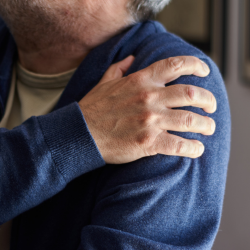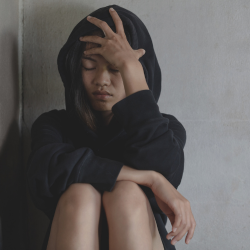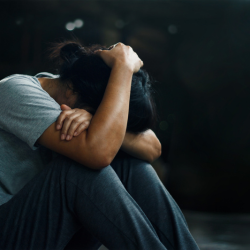20+ Years Experience
Specialist Private Drug Rehab

Spice addiction is a growing concern, as this synthetic drug wreaks havoc on the lives of its users and their loved ones.
With its dangerous and unpredictable nature, understanding the signs, symptoms, and treatment options for Spice addiction is crucial in combating this insidious threat.
Are you ready to dive into the world of Spice and learn how to recognise and address addiction to this now-synthetic marijuana menace?
In this blog post, we will explore the origins of Spice, the dangers it poses, and how to recognise addiction.
Furthermore, we will delve into the challenges of withdrawal and detoxification, the available treatment options, and the importance of support systems in the recovery process.
Finally, we will discuss the legal consequences of other forms of Spice use and provide answers to frequently asked questions.
Spice is a synthetic drug specifically designed to mimic the effects of marijuana but with potentially harmful chemicals and varying levels of potency.
Many users may not even realise they are consuming this dangerous substance, as it often finds its way into the hands of young adults who experiment with other drugs.
The grave repercussions of Spice abuse cannot be overlooked, as it can lead to addiction physical dependence, new drug dependence and severe health issues.
This synthetic cannabinoid interacts with the same receptors in the brain and body as THC, the active ingredient in cannabis, but with higher doses and a more pronounced effect.
The strong binding affinity of these many synthetic cannabinoids to the CB1 cannabinoid receptor in the central nervous system leads to more intense effects in Spice users.
Therefore, comprehending the origins and effects of Spice becomes significant for providing effective treatment to those addicted to this treacherous substance.
The history of Spice can be traced back the same way to the early 2000s when researchers were seeking novel ways to assess the effects of synthetic cannabinoids.
Its popularity grew due to its legal status at the time and the strong “high” effects it produced. However, the legal landscape has changed, and the use and distribution of spice now carry serious legal consequences in many countries, as it is classified as a controlled substance.
The production of Spice involves applying synthetic chemicals to plant matter or liquid form of material, which is then smoked or vaporised.
These chemical compounds can have unpredictable and harmful effects on other drugs and on the user, making Spice a dangerous and unreliable substance.
With its growing popularity, particularly among young adults, it becomes indispensable to comprehend the origins and threats of Spice and explore treatment options for those battling addiction to spice.
Spice is synthetic marijuana, often referred to as “synthetic marijuana” or “fake weed”. Common street names for this synthetic drug include the many spice users:
These street drugs can be dangerous and unpredictable due to their varying chemical compositions. The deceptive nature of these street names can easily fool unsuspecting users, leading to addiction and health problems.
Spice use can lead to severe physical and psychological effects, including heart attack, psychosis, and even death.
Moreover, its unpredictable nature makes it a hazardous substance for users who may not be aware of the potential consequences.
The dangers of Spice use extend beyond the individual, as it can strain relationships with family and friends, cause social isolation, and lead to long-term physical and mental health problems.
The toxic chemicals found in Spice are not only harmful to the user but can also have lasting negative consequences on their academic and social progress.
Given the family history and its severe repercussions, recognising and treating Spice addiction becomes a necessity to prevent further harm to the individual and their close ones.
The physical effects of Spice use can include:
These effects showcase the devastating impact of Spice on the user’s health.
In addition to the long-term damage to vital organs, Spice users may experience a range of physical symptoms such as:
These symptoms, which can be extremely discomforting and, in some cases, life-threatening, underscore the urgency of identifying and addressing Spice addiction promptly.
Spice use can have a profound impact on an individual’s mental health, leading to severe psychosis, anxiety, and depression.
The synthetic cannabinoids in Spice have been observed to induce and exacerbate psychosis in users, with psychotic symptoms persisting for weeks or even months after cessation.
The cognitive effects of prolonged synthetic marijuana or synthetic cannabinoid consumption can also result in:
The psychological effects of Spice use not only cause significant harm to the person addicted to spice but also to those around them.
Strained relationships, social isolation, and long-term mental health issues are all potential consequences of Spice addiction.
Identifying and addressing these psychological effects form a pivotal part of the path towards successful addiction treatment and recovery.
Recognising Spice addiction involves identifying changes in behaviour, mood, and physical appearance, as well as observing symptoms of withdrawal.
Some common indications and signs of Spice addiction include:
One should bear in mind that these signs may vary from individual to individual, warranting greater risk and immediate assistance from medical professionals and professional help for precise diagnosis and treatment.
Watching a loved one suffer from Spice addiction can be heart-wrenching, but understanding the signs and symptoms can ultimately save their life.
By recognising the early warning signs of addiction, friends and family members can intervene and provide support to guide the individual towards the appropriate treatment options.
The withdrawal and detoxification process from Spice can be challenging due to the variety of chemicals in different batches and the unpredictable nature of withdrawal symptoms.
Spice users may experience a range of withdrawal symptoms, including:
These symptoms can range from uncomfortable to painful, making the withdrawal process a daunting experience for the individual.
It is not advisable to undertake a full treatment for Spice detox at home due to the hazardous nature of the treatment for Spice withdrawal and the need for constant care to ensure the safety and comfort of the individual.
Professional help and support during the withdrawal process play a crucial role in ensuring a successful and safe recovery from Spice addiction.
The duration and severity of withdrawal symptoms from Spice can vary significantly between individuals, with some experiencing post-acute withdrawal syndrome (PAWS) lasting for an extended period. Common withdrawal symptoms include:
These symptoms may persist for several days to a few weeks. The unpredictable nature and potential severity of withdrawal symptoms underscore the necessity for those battling Spice addiction to seek professional assistance and support.
Although the withdrawal process can be challenging, it is a crucial step towards overcoming drug addiction and regaining control of one’s life.
Having a support system, such as friends, family, or professional help, can significantly aid in the recovery process and provide the necessary encouragement and guidance to overcome the obstacles of withdrawal and detoxification.
Various treatment options are available for those seeking spice addiction treatment, including inpatient rehab programs, outpatient services, and tailored therapies.
The most prevalent treatment options involve a combination of psychotherapies and pharmacological therapies, such as Cognitive-Behavioral Therapy (CBT).
Treatment for those addicted to spice and spice misuse. Spice addiction treatment may vary based on an individual’s unique needs and circumstances, thereby necessitating the choice of an appropriate method of treatment for abusing spice for each person.
Regardless of the chosen treatment method, the ultimate goal is to help the individual overcome their addiction and regain control of their life.
Providing the right support, guidance, and treatment options can significantly improve the chances of a successful recovery and a brighter future.
Inpatient rehab programs involve staying in a secure facility for 1-3 months with detoxification, holistic treatment, and 24/7 support.
These programs provide a safe and supportive environment for the individual to focus on their recovery, free from the temptations and triggers present in their daily life.
Inpatient rehab programs for those addicted to Spice or addiction treatment also may offer specialised therapies, such as individual therapy, group therapy, CBT, trauma therapy, grief therapy, anxiety management, and mood management, as well as complementary therapies like hyperbaric oxygen therapy, equine therapy, and mindfulness meditation.
Residential rehab treatment typically begins at four weeks and may extend up to 12+ weeks, depending on the individual’s needs and progress.
Inpatient rehab programs provide a comprehensive approach to addiction treatment, addressing the physical, psychological, and emotional aspects of addiction, ultimately facilitating a successful recovery.
Outpatient services are suitable for those who cannot commit to a residential stay and provide individual counselling and support groups. Although outpatient services can offer valuable support and guidance, they may not provide the same level of care and safety as inpatient rehab programs.
Moreover, outpatient services may be challenging in terms of extricating the addict from their existing substance abuse environment.
It becomes indispensable to consider the advantages and drawbacks of outpatient services and assess if they suit each individual’s unique requirements and context.
Support systems and recovery resources, such as digital support groups and helplines, can play a crucial role in overcoming Spice addiction.
The support provided by peers who have experienced similar struggles can be invaluable in maintaining motivation and staying on track throughout the recovery process.
Digital support group applications, such as Relay, offer a convenient and accessible means of connecting with others who understand the challenges of overcoming addiction.
Friends and family members can also play a significant role in the recovery process by offering a compassionate and understanding support network.
By establishing a strong support system, individuals recovering from Spice addiction can significantly increase their chances of long-term success and a healthier, happier life.
Preventing relapse involves addressing the psychological causes of addiction, developing coping mechanisms, and maintaining a strong support network.
Therapy, self-reflection, and conversations with a trusted support system can help identify the psychological triggers that led to addiction in the first place.
Developing coping mechanisms, such as avoiding high-risk situations, practising stress management techniques, and setting realistic goals, can help individuals resist the temptation to return to Spice use.
Maintaining a strong support network is key in preventing relapse, offering a safe platform for discussing challenges and triumphs, as well as receiving motivation and guidance.
By addressing the root causes of addiction and maintaining a strong support system, individuals can significantly reduce the likelihood of relapse and maintain their hard-won sobriety.
The legal consequences of Spice use can be severe, as it is classified as a class-B controlled substance in the UK.
Possessing or supplying Spice can result in imprisonment and fines, especially if the batch contains class-A controlled substances.
The heightened awareness about the dangers of Spice has resulted in more rigid regulations and enforcement, necessitating users to comprehend the risks associated with consuming this synthetic substance.
In addition to the devastating physical and mental health consequences, the legal ramifications of Spice use can have a lasting impact on an individual’s life.
Seeking treatment and support for Spice addiction can help users avoid these legal consequences and regain control of their lives, ultimately leading to a healthier and more fulfilling future.
Common street names for Spice include K2, RedX Dawn, Paradise, Demon, Black Magic, Spike, Mr. Nice Guy, Ninja, Zohai, and Dream.
The use of Spice can cause irreversible damage to vital organs such as the liver, brain, heart, and lungs. Long-term use of Spice can lead to serious health complications, including an increased risk of cancer, heart disease, and stroke.
It is important to be aware of the potential risks associated with consuming Spice. Spice
Withdrawal symptoms from Spice can last for several days to a few weeks, with some individuals experiencing post-acute withdrawal syndrome (PAWS) for an extended period.
PAWS can include physical and psychological symptoms such as anxiety, depression, insomnia, and fatigue. It is important to seek professional help if you are experiencing any of these symptoms.
Inpatient rehab programs involve extended stays in a secure facility with extensive treatment, while outpatient services provide individual counselling and support groups for those unable to commit to residential care.
Outpatient services are often more accessible and affordable, but they may not be as comprehensive as inpatient programs. Inpatient programs provide a more intensive level of care and can be more effective for those with severe addictions or mental health issues.
To prevent relapse, it is important to address the underlying causes of addiction, build healthy coping skills, and maintain a supportive network of people.
Throughout this blog post, we have explored the dangerous world of Spice, addiction to spice itself, its origins, negative effects, and the available treatment options.
The unpredictable nature of human consumption of this synthetic drug makes it essential for individuals, their loved ones, and society to recognise the signs of addiction, understand the challenges of withdrawal and detoxification, and seek the appropriate help and support.
By addressing the underlying causes of addiction, developing coping mechanisms, and maintaining a strong support network, individuals can overcome Spice addiction and reclaim their lives.
The road to recovery may be challenging, but with determination, support, and the right resources, a brighter and healthier future is possible.
There are a range of other services that we can provide. Have a look at the list below for more information:























We Aim To Reply To All Enquiries With-in 24-Hours